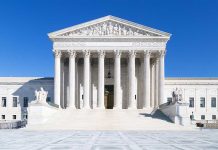
President Trump’s first act in office: Revoking 78 Biden-era executive orders, signaling a dramatic shift in American governance.
At a Glance
- Trump signed an executive order revoking nearly 80 Biden administration directives
- Key areas affected include diversity initiatives, climate action, and healthcare access
- Trump’s actions aim to restore “unity, fairness, safety, and prosperity”
- Additional executive orders address border security, refugee admissions, and government efficiency
Trump’s Inauguration Day Blitz: Dismantling Biden’s Legacy
In a sweeping display of executive power, President Donald Trump wasted no time in setting the tone for his administration. Within hours of taking the oath of office, Trump signed a series of executive orders that effectively dismantled key pillars of his predecessor’s legacy. The centerpiece of this legislative onslaught was the revocation of approximately 80 executive actions signed by former President Joe Biden, marking a clear departure from the previous administration’s priorities.
This bold move signals a dramatic shift in American governance, with Trump’s administration taking aim at policies that prioritized inclusive diversity, climate action, and expanded healthcare access. The new President’s actions underscore a return to what his team considers traditional, merit-based principles and a simplification of government operations.
Restoring “Common Sense” to Federal Government
Trump’s executive order criticizes the integration of diversity, equity, and inclusion (DEI) in federal institutions, viewing these initiatives as divisive rather than unifying. The administration’s stated goal is to restore unity, fairness, safety, and prosperity by returning what they term “common sense” to the federal government.
“The weaponization of political adversaries of the previous administration” will be ended, Trump declared, emphasizing his commitment to restoring what he perceives as balance in governmental operations.
This approach is predicated on the assertion that Biden’s directives were fiscally unsustainable and overly progressive. By dissolving efforts aimed at racial equity and environmental sustainability, the Trump administration has embarked on a path to re-anchor policies within frameworks it considers grounded in fundamental, traditional American values.
Key Areas of Policy Reversal
The scope of Trump’s executive actions is broad and far-reaching. Among the most significant reversals are the withdrawal from the World Health Organization and the Paris climate agreement, reflecting a stark departure from international cooperation on health and environmental issues. Additionally, Trump has declared a national emergency at the U.S.-Mexico border, signaling a renewed focus on immigration control.
“Preventing bureaucrats from issuing any more regulations” is a priority for Trump, who ordered a regulatory freeze to consolidate control over federal rulemaking.
Other notable changes include an overhaul of the refugee admission program, the creation of a “Department of Government Efficiency” (DOGE), and a mandate for federal workers to return to full-time in-person work. These actions collectively represent a comprehensive rejection of Biden’s governing philosophy and a reorientation towards Trump’s vision of American governance.
The Road Ahead: Implications and Expectations
The sheer volume and scope of Trump’s day-one executive actions surpass those of his first term in 2017 and those of Joe Biden’s inauguration. This aggressive start suggests a presidency intent on swift and substantial policy changes. With more than 50 additional items slated for signing in the coming days, including potential moves to end birthright citizenship, the Trump administration is poised for a period of intense legislative activity.
As the dust settles on this initial flurry of executive orders, the American public and the international community will be watching closely to see how these policy reversals play out in practice. The coming weeks and months will likely bring further clarity on the long-term implications of Trump’s dramatic first day in office, as well as potential legal challenges to some of his more contentious actions.











